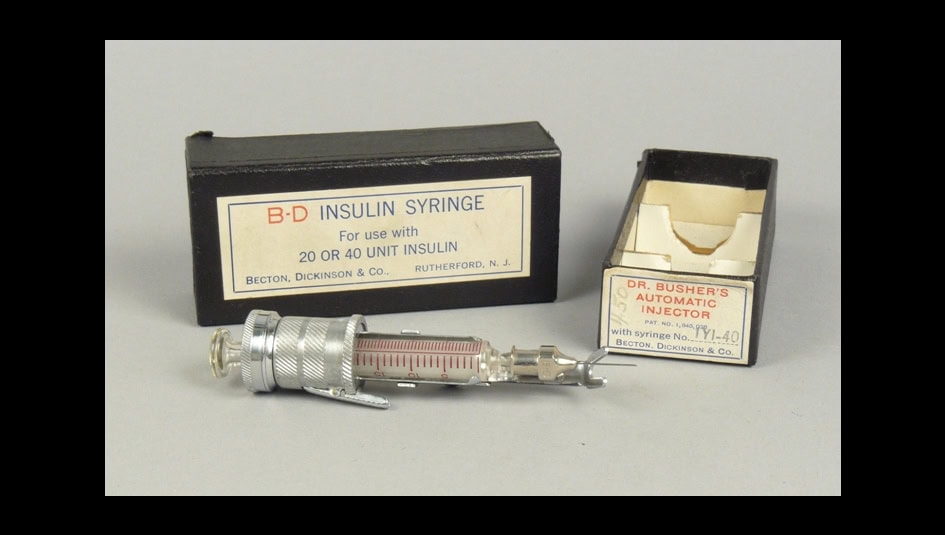Here’s What You Used to Treat Type 1 Diabetes in the 60’s and 70’s

In this excerpt from The Savvy Diabetic – A Survival Guide, diabetes activist Joanne Milo reminisces about diabetes treatment strategies and tools from yesteryear:
I immediately started on insulin injections, initially administered by Dad, an engineer but secretly a wannabe surgeon. He was outstanding at giving painless shots. But, given the psychological thinking of the time, the doctor thought it was “unwise” for a father to give injections to a prepubescent daughter. So Dad sadly turned over the shot tasks to Mom.
Mom was a nervous wreck. She would jab me with the syringe, think she “met resistance”, stop, pull the syringe out, and go back to step #1. This “poke and pull out” could go on for five to ten times per shot. It’s surprising that I didn’t spring a leak.
For shots, she developed a graphing system on my buttocks using red mercurochrome dots in a 5×5 grid pattern, spaced one inch apart. On my first visit back to my pediatrician, he noticed the odd, geometric bright red rash on my behind and was puzzled. Mom explained her system to the doctor with great precision.
Read more: A shot from the past.
I soon learned to give myself my own injections of insulin, using the Dr. Busher’s Automatic Injector, a contraption that held the syringe and would automatically inject when you pushed a little lever. I learned to test with Tes-Tape, a yellow strip of tape that turned varying shades of green to indicate how much sugar was spilling into my urine.
Within a year, there was a new product for testing — CliniTest, which made me feel a bit like a mad scientist. To use it, I first had to discard my first pee, drink some water and then wait until I could collect my second pee. Then, using an eyedropper, I would squeeze 10 drops of water plus five drops of urine into a test tube, add a fizzing tablet, wait 30 seconds, and then compare the color to a chart posted on our bathroom wall. The results were not terribly accurate or definitive; one category could mean a blood glucose level of 200 mg/dL or of 500 mg/dL.
A 13-year-old could quickly get the “right” answer by adding a few more drops of water and a few less drops of urine. Do that and, Voila, my glucose readings were in the good range. I just wanted to get good numbers and be normal.
Read more: A half century with Type 1 diabetes.
Around 1970, my parents bought me one of the first blood glucose monitor systems: the Ames Reflectance Meter (which I’ve since donated to the FDA for its display of early technology). It was big and clunky, plugged into the wall, and was analog rather than digital. But it provided a more accurate reading than urine testing.
I entered college in 1972 and continued to use blood glucose meters. They were becoming smaller, faster and more accurate. By the 1980s, newer technologies had improved tools to assist in living with diabetes. A1C laboratory tests were used to determine the average blood sugars over a 90-day span. More accurate meters with quicker result times gave me more reliable results. Newer human insulin, which were of purer quality, gave me better and faster absorption.
Then in 2004, I started to use an insulin pump. Mine was an aqua blue Deltec Cozmo, which looked very cool and allowed me to make instantaneous insulin corrections to adjust to changes in my life, exercise, and diet.
Do you have fond or unfond memories of diabetes treatment tools from yesteryear? Email our editor your memories at cidlebrook@epscomm.com.
If you would like to buy The Savvy Diabetic – A Survival Guide, you can do so at http://thesavvydiabetic.com/buythebook/.
This excerpt has been edited for length.
Thanks for reading this Insulin Nation article. Want more Type 1 news? Subscribe here.
Have Type 2 diabetes or know someone who does? Try Type 2 Nation, our sister publication.